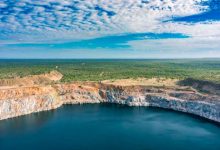One of the many great mysteries about the vagaries of Australia’s National Electricity Market has been the fate of the grand plans to build big, long storage pumped hydro projects in South Australia.
There were six pumped hydro projects seeking finance just a few years ago, all confident of a role in a grid that is leading the world with the uptake of wind and solar and the penetration of rooftop PV, and which is already forcing the local network into negative demand in the midday sun.
South Australia has sourced 62 per cent of its generation from wind and solar in the past 12 months, and has an official target of reaching net 100 per cent renewables by 2030. It will likely reach that mark well before then, but it will need significant amounts of storage to get there.
The pumped hydro projects held great promise, and were backed mostly by companies with deep pockets. South Australia is about as prospective a market as you could imagine for storage, but one by one the projects have fallen away.
Tilt Renewables decided early on that its proposal to use a reservoir in the Adelaide Hills wasn’t going to work, and AGL was then told by its prospective partner, a copper miner, that it preferred to dig for more ore rather than filling its mine pits with water.
EnergyAustralia was excited about the Cultana pumped hydro project, which was proposing to use sea-water, but also found that was going to cost too much.
Sanjeev Gupta’s pumped hydro proposal also appears to have withdrawn, possibly because of his own financial difficulties, but also because the Middleback iron ore mine that was to be used as a reservoir is more profitable being a mine than holding water.
That left only two projects competing for funds being offered by the Australian government, one through the ill-fated Underwriting New Generation Investment (UNGI) program, which so far has come to nothing despite the urgency with which Angus Taylor said he wanted to build dispatchable capacity.
The Australian Renewable Energy Agency also offered a $40 million grant for a pumped hydro project in a separate scheme, and revealed 20 months ago – in February, 2020 – that it had chosen its favoured project from a shortlist of four and would reveal all within a few months.
Nothing has been heard of it since. Given the attrition rate of the other projects it was presumed that only two remained in the hunt – Rise Renewables and UPC’s Baroota project near Port Pirie, and the Goat Hill project being pushed by Sunset Power and Delta Energy.
But it now appears that the 250MW/2,000MWh Baroota project is the only one standing. A transmission planning report released by ElectraNet this week, reveals that the 242MW/1,835MW Goat Hill project near Port Augusta, has cancelled its connection agreement.
It also reveals that Baroota is currently working on its own connection agreement. It is, in fact, the only new generation project in the state that is going through the process.
UPC, which was recently bought out by its shareholder AC Energy of the Philippines for $US243 million, notes on its website that to get built by 2025, Baroota will require a final investment decision by the end of 2021.
Australia hasn’t built a new pumped hydro project for nearly 40 years, although the Kidston pumped hydro project in north Queensland is currently being built by Genex, after it secured the bulk of its funding from the North Australia Infrastructure Facility and the CEFC.
And, of course, there is the federal government backed, or taxpayer funded Snowy 2.0 that has also begun works. The NSW government says it attracted some 11GW of pumped hydro proposals for its energy infrastructure roadmap which will plot the path to replace its ageing coal generators. It only needs 2GW.
Those projects include proposals from AGL, Alinta and EnergyAustralia, among others, although it is clear that the construction costs of pumped hydro are higher than previously hoped and the returns are not clear because of the uncertainty around policy and market rules.
In South Australia, the issue is made more complex by the construction of the new interconnector to NSW, which will support more wind and solar but could flatten out volatility, the key metric for pumped hydro storage.
Many of these new wind and solar projects will also come with their own big batteries, and other long term storage options are also on the table, although these face similar uncertainties, along with technology risk.
These include the thermal storage proposal put forward by 1414 Degrees, now with the support of Woodside, and the “solar hydro” storage project put forward by Photon, using concentrated solar technology developed by RayGen.
What’s interesting to note is that South Australia, despite operating at an average 62 per cent renewables, and reaching 100 per cent or more wind and solar on nearly every day of the past six weeks, has achieved this with very little storage, and only minimal links to Victoria.
South Australia has just three big batteries at Hornsdale, Lake Bonney and Dalrymple, for a total capacity of 207MW/250MWh, although most of this is used for grid services, including frequency control.
RenewEconomy reached out to the South Australia government, ARENA and UPC, but did not receive a response from any of them before publication.
See also: Pumped Hydro Energy Storage Map of Australia










